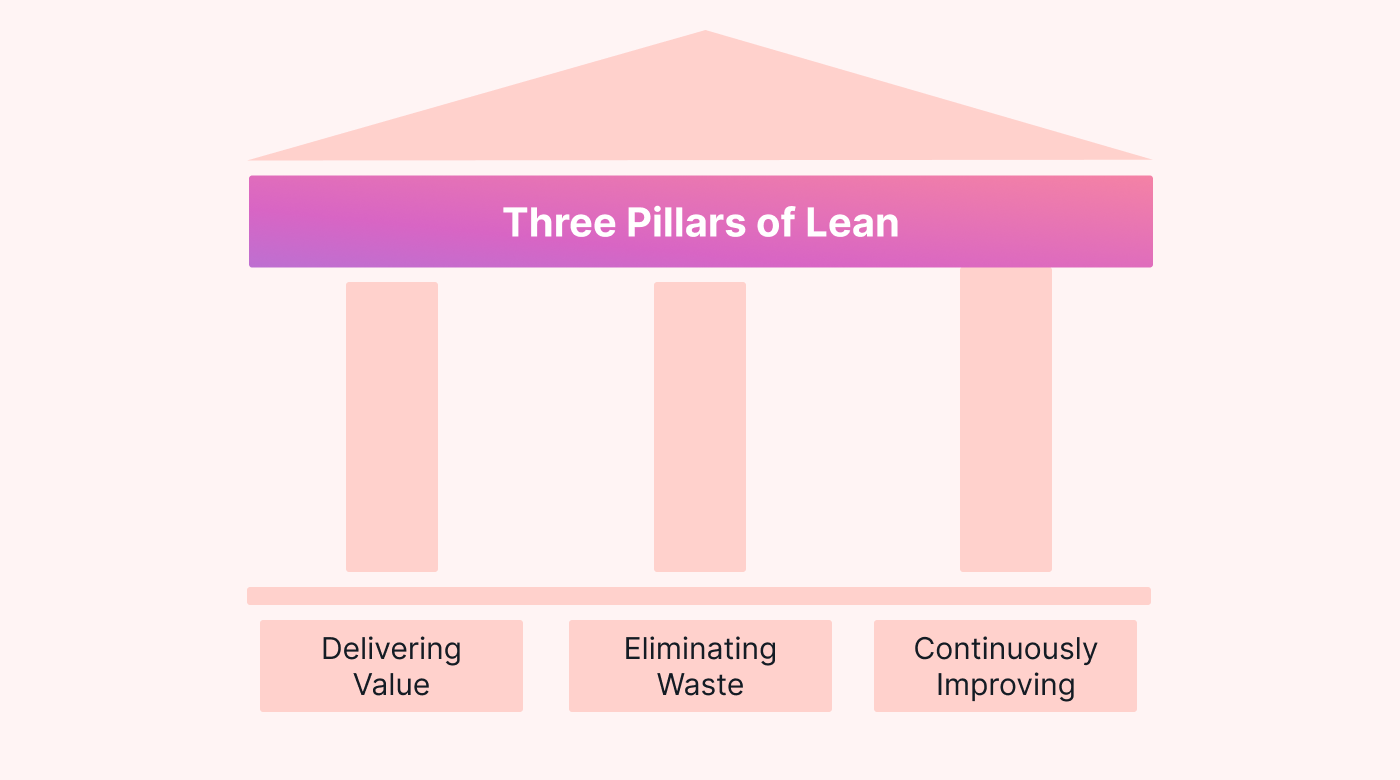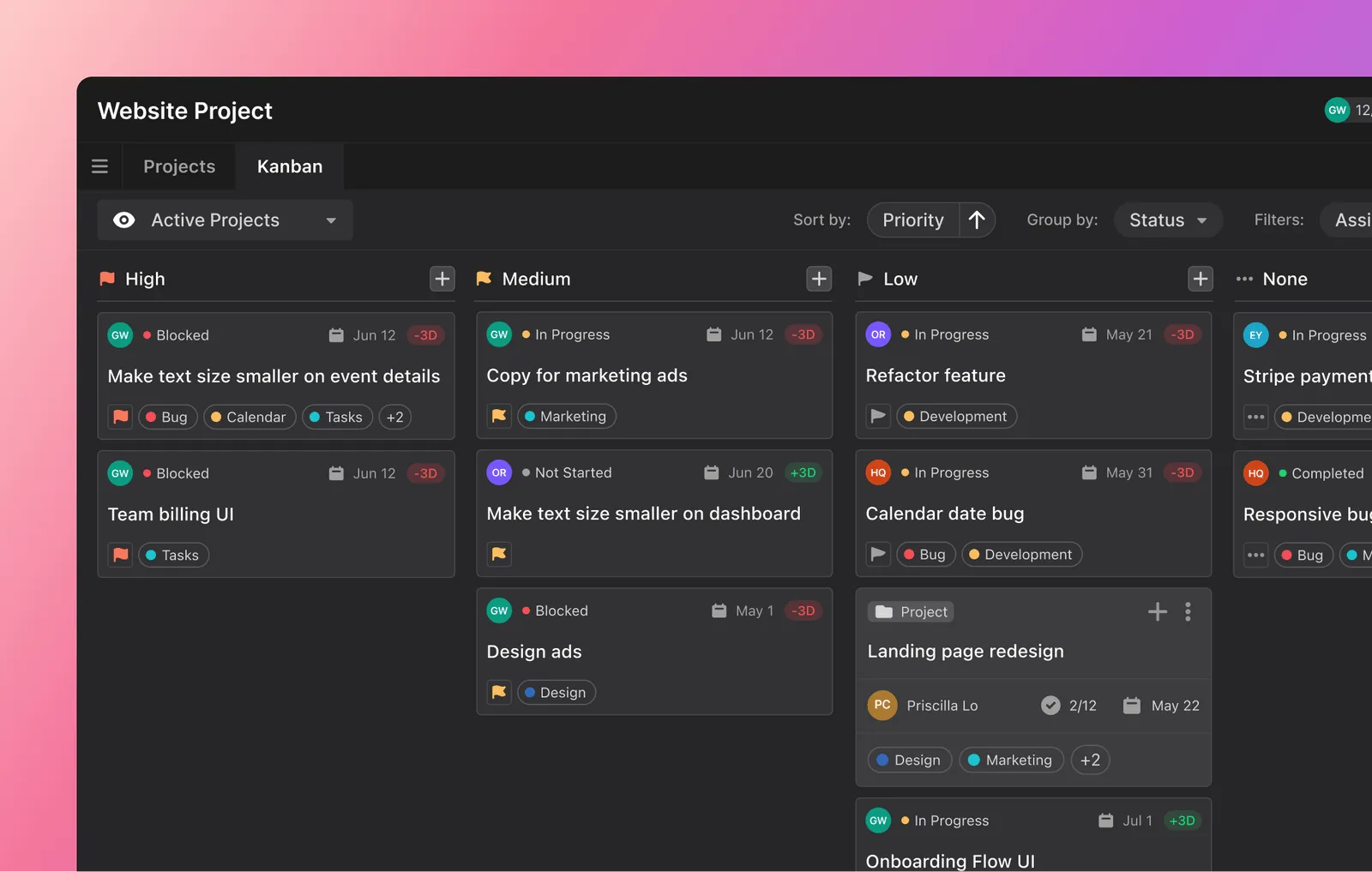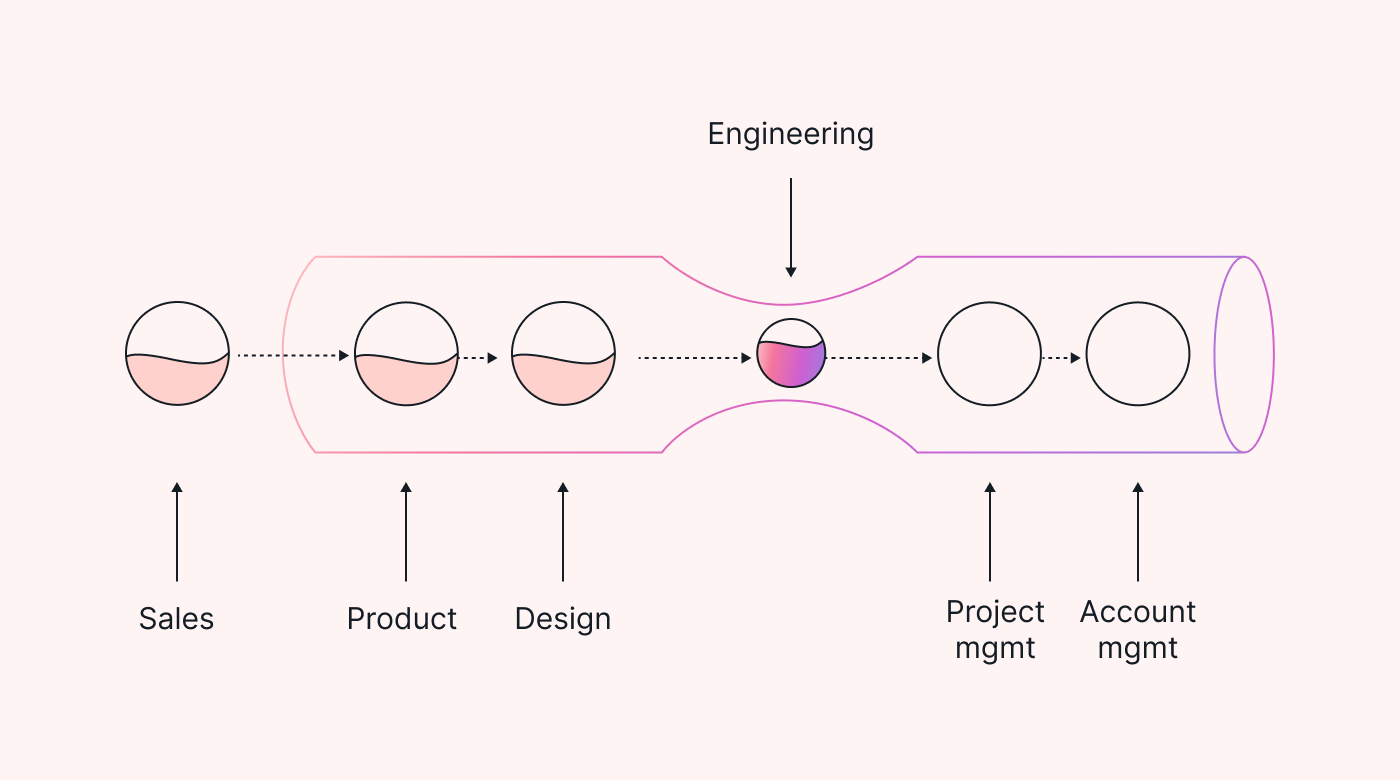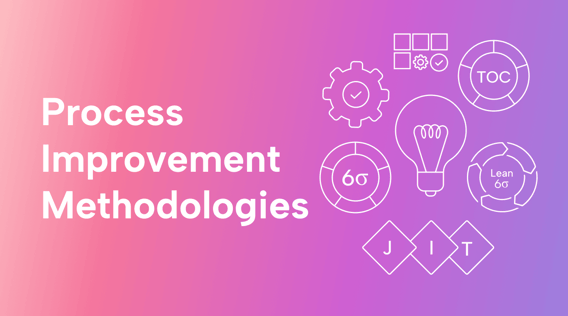Are you tired of the trial-and-error approach to improving your business processes? Or maybe you feel like you aren't getting the results you want.
You've probably felt the frustration of processes that drain resources, get in the way of productivity, and add unnecessary costs to your operations.
It's time for a more innovative strategy. That starts with choosing the right process improvement methodology.
To help, we'll review these methodologies and show you 7 of the best options for business owners.
What is a process improvement methodology?
your business processes better. The main goals? Boost productivity, keep up with changing business needs, and continuous improvement — all while reducing costs and bringing in more revenue.
How does it work?
Instead of randomly trying to improve things, these business process management methods use data to find (and validate) the best changes.
First, you review current processes in detail to look for issues. To do so, it's best to lay them out visually.
Finally, you implement innovative changes and test them to see how they perform compared to the old way.
For example, you've got a bakery and want to bake more cookies in less time. A process improvement methodology will help you determine exactly how to do that. Maybe you need to tweak a recipe or organize your kitchen differently. Then, compare how quickly you can bake cookies now vs. the old way.
The 7 best process improvement methodologies
Now that you know what business process improvement techniques are, here are seven perfect for small businesses.
1. Lean methodology
Lean is a popular process improvement methodology that has its roots in the manufacturing industry.
The essence of lean is about trimming the fat until your business is a lean, mean production machine—figuratively speaking. Lean principles aim to eliminate waste from your processes, and this waste can manifest in various forms.
Picture your business processes as a series of actions. Some of these actions add value – like the key ingredients in your cookie recipe. Others, well, they’re just extras that don’t add any real flavor to the mix.
To help find which unnecessary steps to “lean out,” this method uses a value stream—the sequence of activities that create value for your customers or bring a concept to life. Value-added activities are those a customer is willing to pay for, while non-value-added activities are waste.
Here are a few types of waste commonly found in business processes:
- Unnecessary movement of materials or information.
- Excess stock that ties up resources.
- Wasted physical movement of people or equipment.
- Idle time in the entire process, like cookies waiting to be baked.
- Overproduction.
- Over-processing.
- Errors and mistakes that require rework.
- Underutilizing skills and knowledge.
 |
Returning to our cookie baking example, you'd first evaluate your current processes. Then, you find the value stream and identify where the waste is hiding (or where you can add more value). Maybe you'd uncover that you're spending too much time shuttling ingredients back and forth between the kitchen and storage. So now, you reorganize your kitchen layout or change how you order ingredients to "lean out" that entire process.
2. Six Sigma
Six Sigma is a method that helps businesses produce their products and services as flawlessly as possible. To do this, you look to reduce defects or inconsistencies in processes that affect your product or service.
Within Six Sigma, there are two “mini-frameworks” that you can use:
- DMAIC for improving existing processes.
- DMADV for creating new ones.
Let’s break down how DMAIC works first:
- Define: This is where you set a clear goal for your project. What are you trying to improve or fix?
- Measure: You closely examine your existing process to understand its performance.
- Analyze: Here, you dig deep to uncover the root causes of defects or problems in your approach.
- Improve: Armed with knowledge from the analysis, you change the process to address those root causes.
- Control: In this phase, you watch the improved process to measure results or make more changes.
Now, let's explore DMADV:
- Define: Just like in DMAIC, you define the goal, but you’re creating a new process from scratch here.
- Measure: You identify what factors are crucial to the quality of your new process. These are called critical to quality (CTQ).
- Analyze: Here, you explore different design and development options.
- Design: You create the process once you’ve settled on the ideal plan.
- Verify: Before you launch the full-scale process, pilot it to ensure it meets your goals and customer satisfaction.
3. Lean Six Sigma
Lean Six Sigma uses the best of both approaches to help you save time, improve quality, and cut costs.
With a Lean Six Sigma approach, the idea is to cut waste and reduce process defects in your organization. It relies on DMAIC for the structure, while it uses tools from both methods, such as value stream maps and SIPOC analysis diagrams, to visualize processes, identify opportunities for improvement, and track progress.
4. Kanban methodology
Kanban is an Agile methodology that visualizes how to manage, define, and elevate product and service delivery in your organization.
Its name, "Kanban," is a Japanese term that literally means "visual board," and that's precisely what it is – a visual tool that helps to keep your processes on track.
This method uses a Kanban board with columns representing different process stages.
For your bakery, columns could show "to bake," "baking," and "baked." Tasks or to-do items are represented as movable cards, and as a task progresses through your process, you simply move its card from one column to the next.
 |
With Kanban, you can quickly identify areas where work is piling up or tasks are stuck. Once you spot those bottlenecks, you can take action to optimize your processes. This might involve redistributing tasks or allocating more resources—like adjusting the baking time for those stubborn cookies.
5. Total quality management
Total quality management (TQM) helps ensure that every element of your organization works harmoniously. It’s a philosophy and management approach that aims to deliver the highest quality products and services (and improve the customer experience).
While every business is unique and will have varying elements to harmonize, the principles of TQM stay the same:
- TQM advocates for a strategic and systematic approach (it works well with waterfall — a project management methodology).
- TQM is a customer-focused method—customer ideas of value reign supreme.
- All employees should unite around common business goals.
- TQM defines the must-have steps of any process and continuously tracks performance to detect deviations.
- The business should always look for ways to become more effective and competitive.
6. Just in time (TPS)
Just in time, also known as the Toyota Production System (TPS), is a great method for start-ups or businesses with high production costs. This method focuses on producing things precisely when they're needed, no more, no less.
There are three ways TPS helps with business process improvement:
- It minimizes the costs associated with keeping excess inventory on hand. Your bakery will have just enough ingredients to meet the day’s demand.
- It helps you adapt to demand, like baking a special batch of oatmeal raisin cookies to meet a customer’s request.
- TPS promotes a ‘pull’ strategy, where production is based on customer demand. You’ll only bake a fresh batch of cookies when customers order.
7. Theory of Constraints (TOC)
The theory of constraints (TOC) identifies the biggest factor stopping you from reaching a goal. It then uses a systematic process to help you remove the constraint so that your process flows more freely.
 |
TOC uses these five repeatable steps to eliminate the limitation:
- Determine the constraint.
- Figure out how to exploit the constraint.
- Subordinate and synchronize to the constraint.
- Alleviate the constraint.
- Repeat the process until the constraint is gone.
Tools and techniques for process improvement methodologies
Let’s quickly review the tools and techniques that can help you implement these business process management methodologies.
Lean tools
5S helps you organize and maintain a clean workplace. It stands for sort, set in order, shine, standardize, and sustain to help you create an efficient and visually organized workspace.
Value stream mapping provides a clear picture of how your processes flow.
Kaizen (PDCA cycle) is all about continuous process improvement. You plan a change, implement it, check its effects, and act accordingly to make ongoing enhancements.
Six Sigma tools
Cause and effect analysis, also known as the fishbone or Ishikawa diagram, helps identify the root causes of problems within your processes.
SIPOC (analysis) stands for suppliers, inputs, process, outputs, and customers. It gives you a structure to help you understand and improve these process elements (and your service or product quality).
Process mapping and process flowcharts are visual representations of a process so that it's easier to analyze and optimize.
Kanban tools
Kanban boards are digital workflow management tools to help you manage tasks efficiently by visualizing work progress.
Use Motion to implement your process improvement
Motion, an AI-backed app, features an intuitive Kanban board, which you can customize to your business processes. With it, you can easily track the progress of work and processes (and make adjustments), just like you would with a physical board.
Motion's Kanban board is even better because it uses an AI task manager to help you manage the work on the board.
For example, if you move a task like "ordering ingredients" to another column (work phase), then the AI will automatically rearrange all the tasks dependent on that one.
Motion will also notify you if it foresees any delays or scheduling issues in your production workflow so you can make changes on the fly.
Motion's AI task manager takes the guesswork out of work allocation. It can automate the scheduling of tasks and assignments within your organization. This helps ensure that work is distributed efficiently—meaning your workflow process is always fully optimized.
Ready to use Motion for your process improvements? Sign up for your 7-day free trial.




